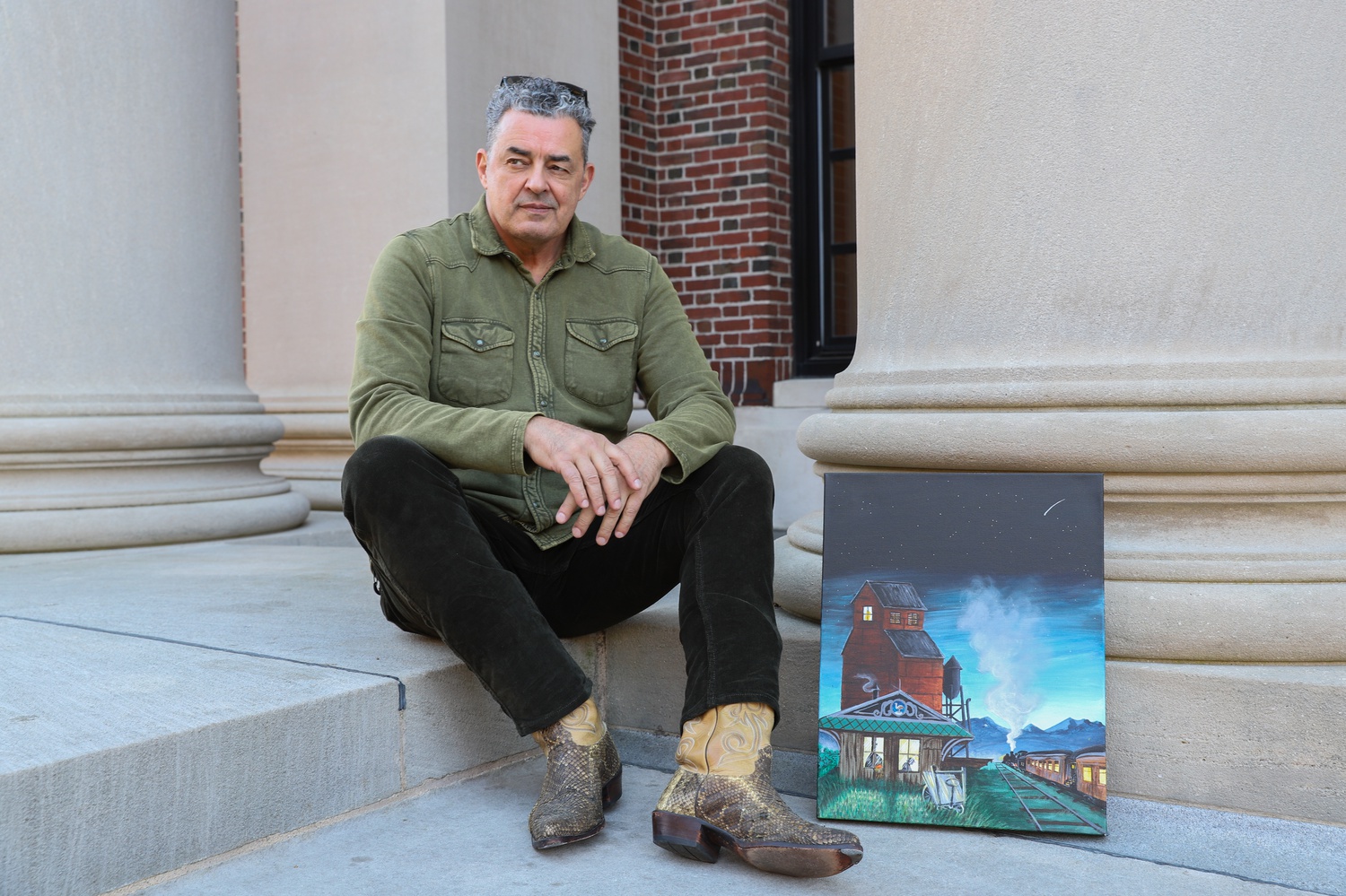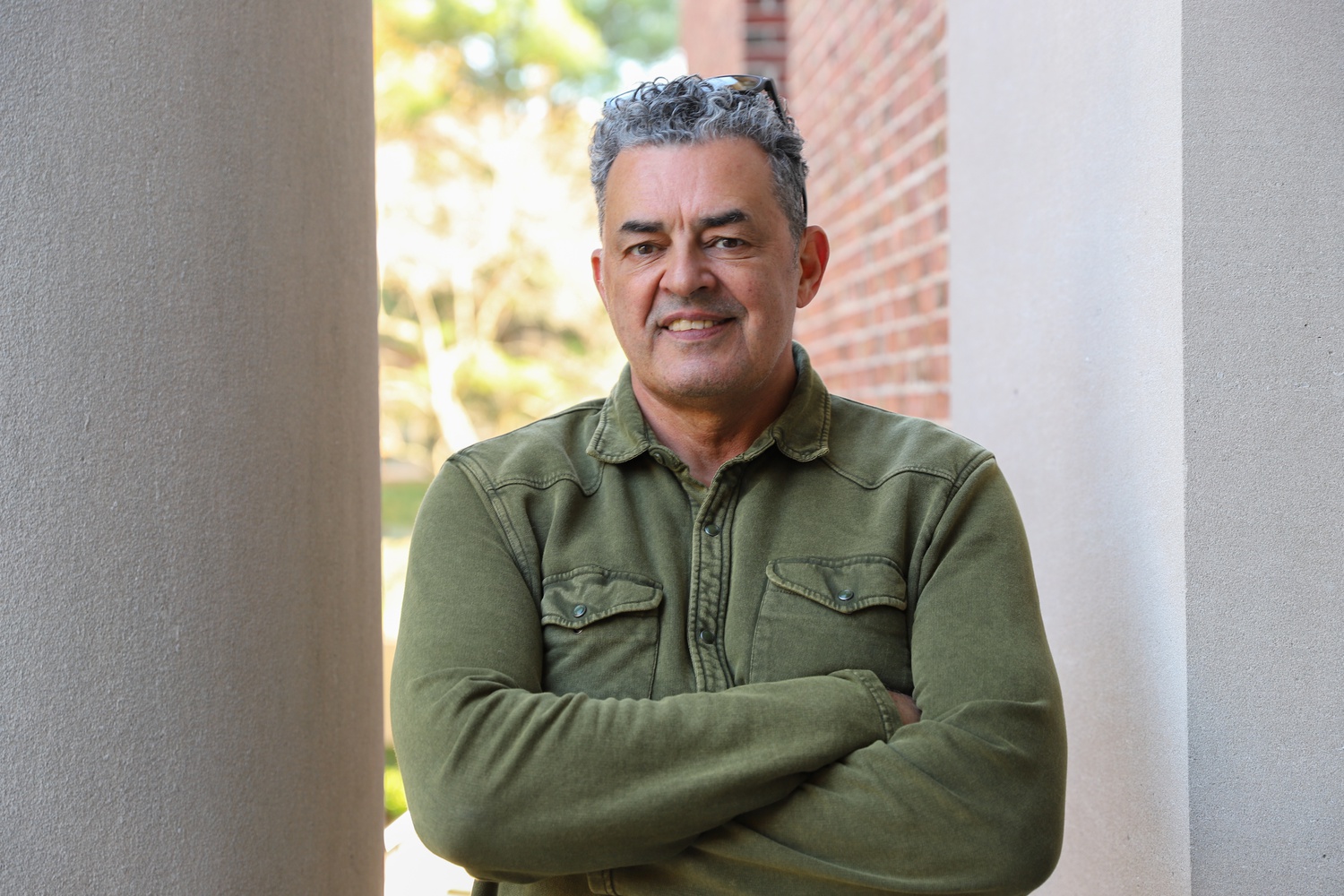The Artist Who Watches Over Widener
Students walking in and out of the Widener Library’s Loker Reading Room this past Thursday afternoon may have overheard a mouth-watering description of Empadão de Galinha (a Portuguese analog to chicken pot pie), or the etymological breakdown of the Latin word for bald eagle, or a lively interpretation of the Biblical story of the Miraculous Catch of the Fish. These anecdotes were mere details that janitor Mauricio S. Cunha touched on while illustrating his fascinating life story and artistic calling. Tucking all 6 feet and 4 inches of himself into a chair in the corner of Widener Library’s second floor, Cunha recounted his upbringing, passion for the arts, and love of his work in a rich, lyrical voice.
Cunha has served as a janitor for Widener, Lamont, and Pusey libraries for the past 16 years. He moved to America in 2002 and first saw Widener as a tourist when visiting Harvard with his family. When he walked in, he thought to himself, “This is the place I would like to work.” He identifies art and history in every aspect of his job, from the contents of recycling bins to the architectural elements of each library. Leaning forward and clasping his hands, Cunha begins, “My life is an artist’s life” — and, indeed, he is also an avid painter and visual artist.
“Here, Widener, is the great icon,” he lifts his hands up, motioning around to the intricate frescoes and the ornate marble. “Right? It’s a neoclassical building, beautiful.”
“I see the architecture; I see everything in my life as art: that’s the artist’s vision,” he says. Born in 1958 in the small town of Itanhandu, Brazil, Cunha was the second of four children. He says he inherited the artist’s gift from his mother, who was a pianist and a painter. “Since I was a kid, I was always curious to draw. I used to watch my mom painting, mostly she painted landscapes. She’d paint a road with mud, and you could feel immediately the mud on the road,” he smiles. “I learned a lot of skills about art from her — to see art itself in other things, not just a canvas or painting or drawing.”
Growing up, Cunha remembers being surrounded by music. Some of his earliest memories include his parents dancing together to American classics singers like Ray Charles, Nat King Cole, Louis Armstrong, and Frank Sinatra. “All the American singers were in my home,” Cunha says. “I used to say that America was born inside me.”
In his own work, Cunha makes it his mission to paint all different elements of the visual arts, and notes that he is especially inspired by Rembrandt. “Rembrandt was the most complete artist ever. Why? Because he did the architectural stuff. Animals, anatomy, people, landscape, everything.”
But Cunha classifies himself as more of a surrealist, drawing on his experience of the psychedelic rush of the 1970s in Brazil, and his passion for Pink Floyd. “I am a surreal guy. I do surreal stuff, that’s my original stuff,” he says while pulling out his phone to show us an original painting. Butterfly wings in saturated hues expand off the back of a fairy-like creature, which flies across a cactus-dotted desert below a sky full of colorful planets. He believes that what makes a true artist is their sensibility: the ability to see all the beauty around you and manifest that inner appreciation outward. He says, “It’s not just about learning — it’s from the inside out, from the heart.”




